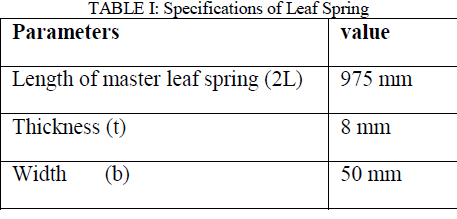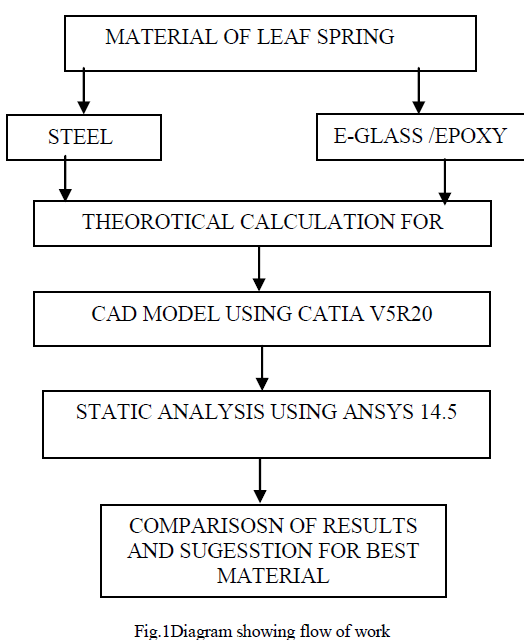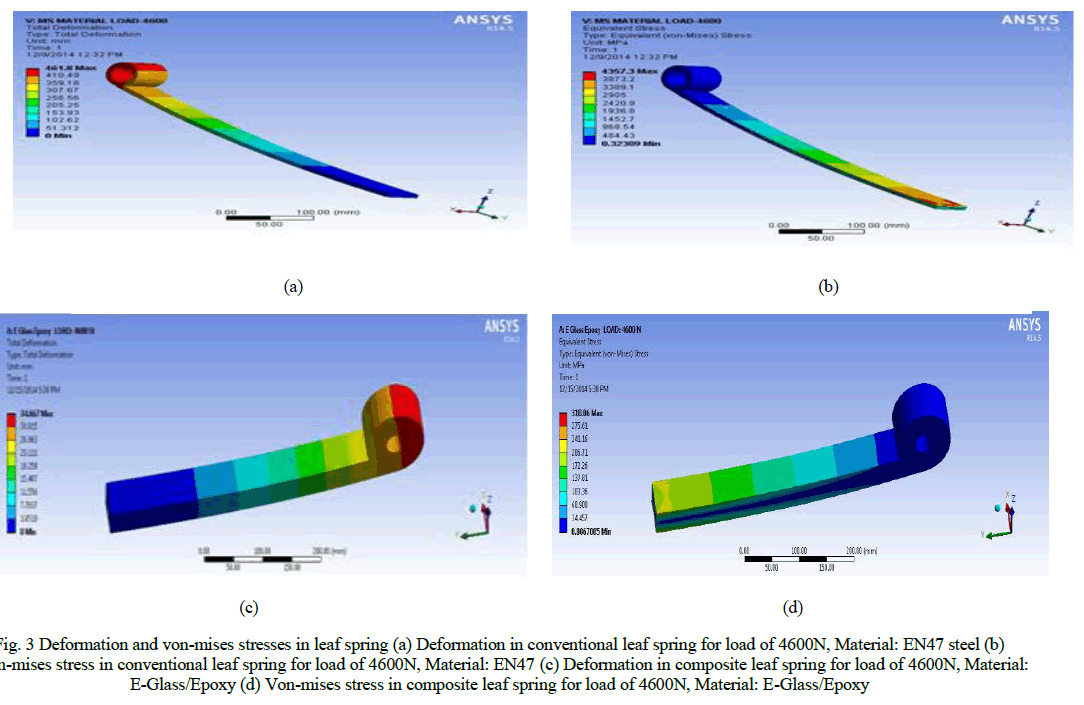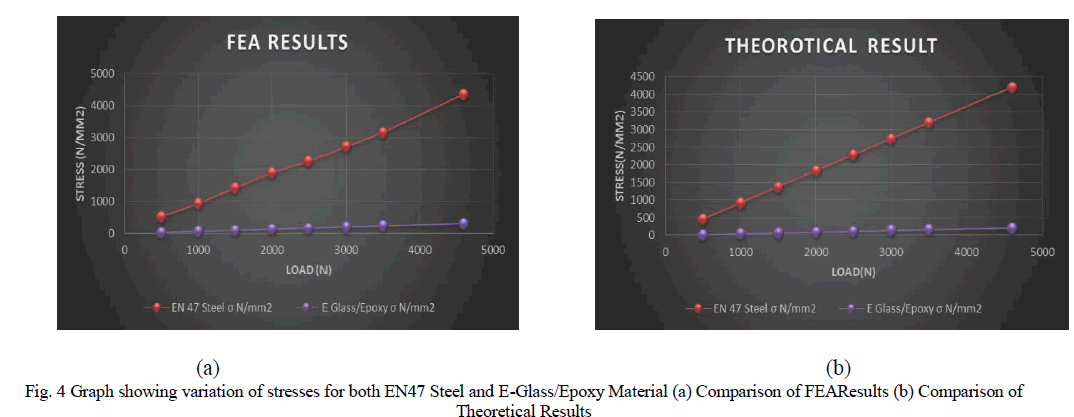ISSN ONLINE(2319-8753)PRINT(2347-6710)
ISSN ONLINE(2319-8753)PRINT(2347-6710)
| Arun.L.R1*, Saddam Hussain. B 2 , Dr. Suneel Kumar N.Kulkarni³ Department of Mechanical engineering, The oxford college of engineering, Bangalore, India1,2 Professor, BTL Institute of Technology, Bangalore ,India3 |
| Related article at Pubmed, Scholar Google |
Visit for more related articles at International Journal of Innovative Research in Science, Engineering and Technology
The Aluminium alloy composite are made by mixing particulate in a molten alloy. These composites are hard, rigid, and tough and possess good mechanical properties their ductility will decrease and will gain better resistance to corrosion these type of aluminium metal matrix composites are used in automotive application, aerospace and construction. They even are enriched with good weight to strength characteristics. The present work is concentrated in a view to produce such type of enhanced composites. the cheaper method of fabricating Aluminium metal matrix composite is by stir casting method and by proper reinforcement selection. Silicon Carbide (SiC) is ceramic material which is hard and can enhance aluminium strength, fly ash is a power plant debri and easily available¹. The composition is selected on weight percentage basis SiC with 6 % and 9% and fly ash with constant 15 % and AL6061 T6 alloy as matrix material. With proper vortex formation particulate dispenses wisely which is evident from SEM and EDS analysis. The mechanical tests are carried out and it is observed that tensile and hardness improved compared with monolithic alloy. The fatigue test was conducted using fully reversed cycle R=-1 using rotating bending machine at room temperature. Loads are defined by considering 0.5UTS, 0.7UTS and 0.9UTS to plot S-N curve.
Keywords |
| Hybrid composite, al6061, fatigue, flyash, Sic |
INTRODUCTION |
| The urge for new material in the high end applications led to development of composite materials. The presence of reinforcement, such as Silicon Carbide (SiC) and Fly Ash in Aluminium MMC’s increases the Mechanical characteristics and load carrying tendency[1]. The most easy and reliable way to fabricate aluminium MMC’s is by stir casting also known as vortex casting. the controlled vortex formation during liquid state enables even particulate distribution. Mechanical properties of composites are affected by particle size, shape and volume fraction of the reinforcement, matrix material and interface reaction. To overcome this problem 2% of magnesium is added to liquid alloy to ensure wettability. Fly ash is extracted Raichur thermal power plant and SiC locally. The magnesium avoids oxygen at surface thus eliminating gas layer and improving wettability. Hybrid aluminium MMC’s containing reinforcements such as SiC with Fly ash is available in literature[1-8] Sandeep Kumar Ravesh [1] et.al conducted and experiment on Hybrid metal matrix composites with A6061 as matrix metal and ceramic metal such as SiC as reinforcement and Fly ash. Up on experimentation Author found out that enhancement in the mechanical properties such as Tensile, hardness, impact where Sic weight percentage was varied and fly ash weight percentage was kept constant. It was also found that elongation was decreased and brittleness was increased. Study concluded the effective use of fly ash rather than wasting it as industrial waste. Basavaraju.S [2] et.al, studied the behaviour of aluminium alloy LM25 as matrix metal and Silicon carbide, Graphite, and Fly ash as reinforced material. While reinforcing the Silicon carbide was varied by weight percentage of 2%, 4%, 6%, 8% while graphite and the fly ash were kept constant at a weight percentage of 2%. With the combination of aluminium-graphite-silicon carbide results showed enhanced mechanical properties for 2% Sic and a slight lower for 4% Sic-graphite. 2% and 4% Sic- Fly ash combination made an efficient material. Author observed that the hardness of material enhanced due to addition of 2% Sic-Graphite. The compressive strength was found ideal for 2%-4% Sicgraphite and Sic-Fly ash. 2% Sic and 2% Graphite and 2%SiC-2% fly ash are best possible combination for usage with Aluminium. The material tends to wear fast at 4% Sic, lower the load applied higher was the wear for 2% and 8% addition of Sic, hence reinforcement addition plays crucial role in composites. The highest wear measure was for 8% Sic. |
| M.B.Harun [3] et.al, studied the behaviour of Aluminium alloy metal matrix with reinforcement of 10 % & 15% Fly ash and Sic with weight Percentage of 10% and they concluded that increase in the fly ash content increased the porosity in the composites, with matrix alloy was found with 15% weight % of Fly ash particulate having the highest porosity and lower hardness. Hardness of the Aluminium alloy increased with the addition of Sic particulate in composites Neelima Devi.C [4] et.al, studied the mechanical characterization of aluminium silicon carbide composites experimentally. Author prepared the specimens with different Sic weight ratio’s and concluded that maximum tensile strength was found at 15% SiC weight ratio, also the weight was found to be two times lesser than same dimension of aluminium specimen and also stated that it is very much useful in practical aerospace application. G.N. Lokesh [5] et.al, studied the mechanical properties of Aluminium metal matrix with 5 wt% of Cu, Fly ash and Silicon carbide. Author fabricated specimens with Al-4.5 Wt. % Cu and reinforcement Fly ash 49-60 μm particle size and Sic with 65 μm particle size fly ash weight percentage was 4% and Sic with 6 %. Author concluded that with the addition of 4 % Fly ash and 6% SiC hardness was improved and similarly tensile, wear resistance enhanced. V.C.Uvaraja [6] et.al, compared Al6061 and Al7075 with Sic, B4C reinforcements (5 %, 10 % and 15 % weight ration) respectively for both alloys . The hybrid composite specimen specimens were fabricated and author experimentally concluded that hardness for both the composition was found to be maximum at 15% weight ratio, wear resistance was also found to be improved. Author also concluded that Al7075 with Sic and B4C was performing better that Al6061. Achutha.M.V [7] et.al, has investigated the fatigue and mechanical properties of composites of A6061 (LM 25) aluminium alloy reinforced with silicon carbide and graphite particles. Author fabricated the composites by gravity die casting technique in which the reinforcement particles were dispersed in the vortex created in the molten matrix alloy. Initially he evaluated the fatigue properties of the composites through experimental setup and he found that the data are scattered and to plot S-N curve it requires more number of test specimens, hence he used Monte Carlo simulation technique to plot the S-N curve the composites. Initially he validated the software results with experimental results and then he plotted for composites. Author concluded that the presence of the reinforcements increases the fatigue strength of the composite materials. Chitoshi Masuda [8] et.al, has studied the fatigue properties and fatigue fracture behaviour of A357 alloy reinforced with Sic whiskers and Sic particles by using rotating bending fatigue test method. Author added reinforcement up to volume fraction of 20%. Author stated that the fatigue strength of the Sic whiskers composites are 60% higher than the unreinforced alloy and also the fatigue strength of Sic particulates are superior to the base alloy materials. Author also observed that the fatigue crack propagation is different for both whiskers and particulate composites and both composites would have very significant effect on the fatigue crack initiation and crack propagation near the fatigue limit. |
II. EXPERIMENTATION |
| In present work Al6061 T6 is taken as matrix metal and Sic and Flyash is taken as reinforced particulate. |
 |
| SILICON CARBIDE (SiC) |
| The chemical formula of Silicon Carbide is (Sic) also know as carborundum, is a compound of silicon and carbon. It was originally produced by high temperature electro-chemical reaction of sand and carbon. Silicon carbide is an excellent abrasive and has been used for making grinding wheels and similar abrasive products. Present days it has been developed as excellent quality technical grade ceramic with very high mechanical properties. The material can also be made an electrical conductor and has application in resistance heating flame igniters and electronic components, floor tiles etc. Structural and wear applications are constantly developing. Silicon carbide is composed of tetrahedral of carbon and silicon atoms with strong bonds in the crystal lattice. |
| FLY ASH |
| Fly ash is one of the residues generated in the combustion of coal. It is an industrial by-product recovered from the flue gas of coal burning electric power plants. Fly ash includes substantial amounts of silica (silicon dioxide, SiO2) and lime (calcium oxide, CaO). In general, fly ash consists of SiO2, Al2O3, and Fe2O3 as major constituents and oxides of Mg, Ca, Na, K etc. as minor constituent. Fly ash particles are mostly spherical in shape and range from less than 1 μm to 150 μm with a specific surface area, typically between 250 and 600 m2/kg. The specific gravity of fly ash vary in the range of 0.6-2.8 gm/cc. In present work composite is fabricated with a weight % of 9%,12% & 15% fly ash and 6 % of SiC using stir casting method as shown in figure 1 and aluminium 6061T6 is also casted. |
 |
| The Steps followed in stir casting is are explained below |
| ïÃÆÃË 3 kg of Al6061 alloy is taken in the billet form and placed in the furnace and is melted at 7500 C. (total mixture of 3 kg including reinforcement) |
| ïÃÆÃË The reinforcement fly ash of weight percentage 9%, 12%,& 15% is measured and pre heated to 450-600° Celsius and maintained at that temperature for about 20 minutes to remove the moisture content. |
| ïÃÆÃË Then other reinforcement silicon carbide (SiC ) weight percentage 6% is pre heated. |
| ïÃÆÃË To avoid slag formation scum powder is added to molten metal. |
| ïÃÆÃË The molten metal should be degassed at a temperature of 780 degree Celsius using solid dry hexachloroethane tablets. (<.5% weight) |
| ïÃÆÃË Then the molten metal is stirred to create a vortex and pre heated fly ash and Silicon Carbide are slowly added to the molten metal maintained at >720 degree Celsius, with continuous stirring at a speed of 350-500 rpm to a time of 6-8 minutes |
| ïÃÆÃË Before stiring magnesium about >2% should be added to ensure good wet ability. |
| ïÃÆÃË Then the melt with the reinforced particles are poured in to moulds the pouring temperature should be maintained at 680 degree Celsius. |
| ïÃÆÃË Then it is left for minimum 3 hours to solidify before withdrawing the specimens from the mould. |
III. MECHANICAL CHARACTERISTICS |
| Some of these characteristics are |
| TENSILE STRENGTH |
| Tensile test is conducted with Universal testing machine and the specimen is prepared with ASTM standards dimensions. |
| FATIGUE TEST |
| To carry out a fatigue test a specimen is prepared with ASTM standard dimensions and tested using rotating bending machine with predetermined value of loads by considering 0.5UTS,0.7UTS and 0.9UTS [7] and for which required stress level and cycles up to failure were documented which is used in plotting S-N curve. |
IV. Results and discussion |
| Al-SiC-flyash composite is casted and test for which results are |
 |
| From results it is observed that Tensile strength of composite has enchanced and At 15% fly ash it is maximum when compared with Al6061 T6 table 3 and figur 2 shows the result. fatigue strength of the composite with 6% SiC and 15% fly ash reinforcement is having good fatigue performance compared to the monolithic AL6061 T6 alloy. |
 |
V. SEM ANALYSIS |
 |
| From SEM analysis it can be seen that the reinforced material has been fairly distributed in the metal matrix |
VI. CONCLUSION |
| From the results obtained from the experiment and observation we can conclude that |
| ïÃâ÷ The fly ash can be effectively used for the fabrication of composite there by eliminating storage problem. |
| ïÃâ÷ Fly ash is successfully dispersed in Al6061T6 alloy by stir casting. |
| ïÃâ÷ The ultimate tensile strength has also enhanced with increase in Fly Ash weight percentage and compared to base metal it has increased by 23.26%. |
| ïÃâ÷ The fatigue life has been increased with the increase in weight percentage of fly ash and it can be seen from SN curve that SiC 6% give better results when compared to monolithic alloy. |
References |
|